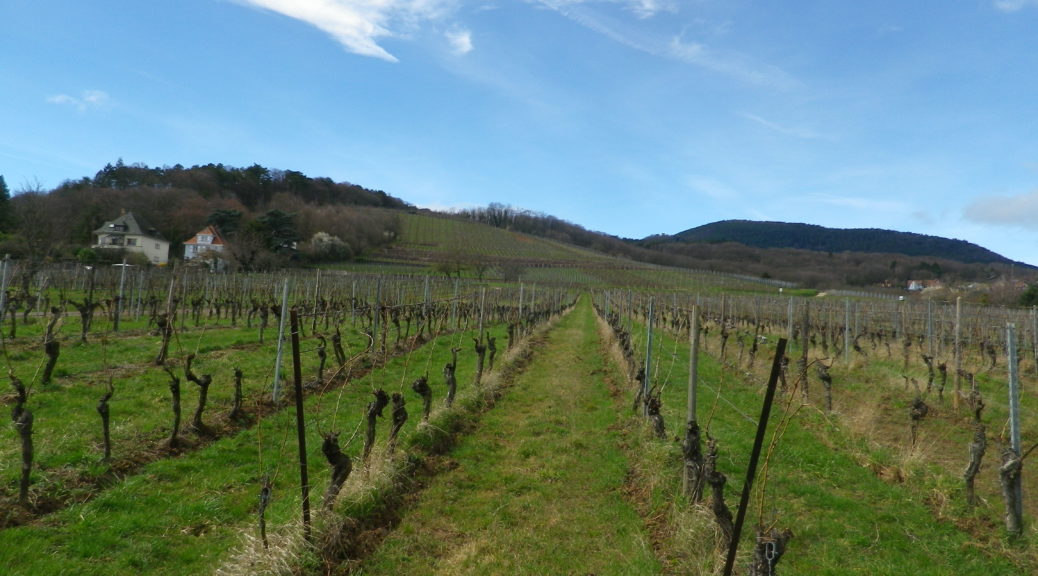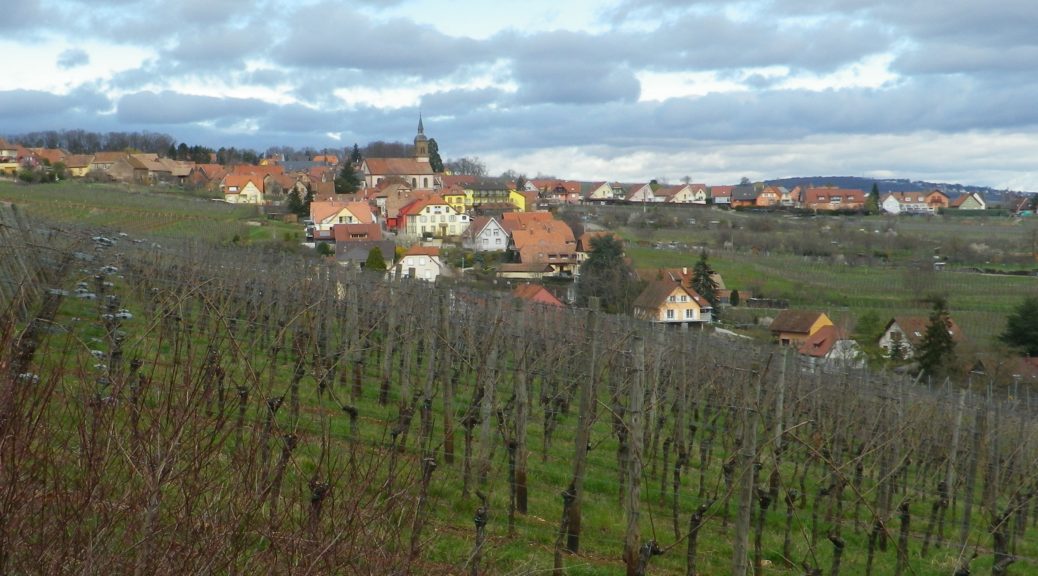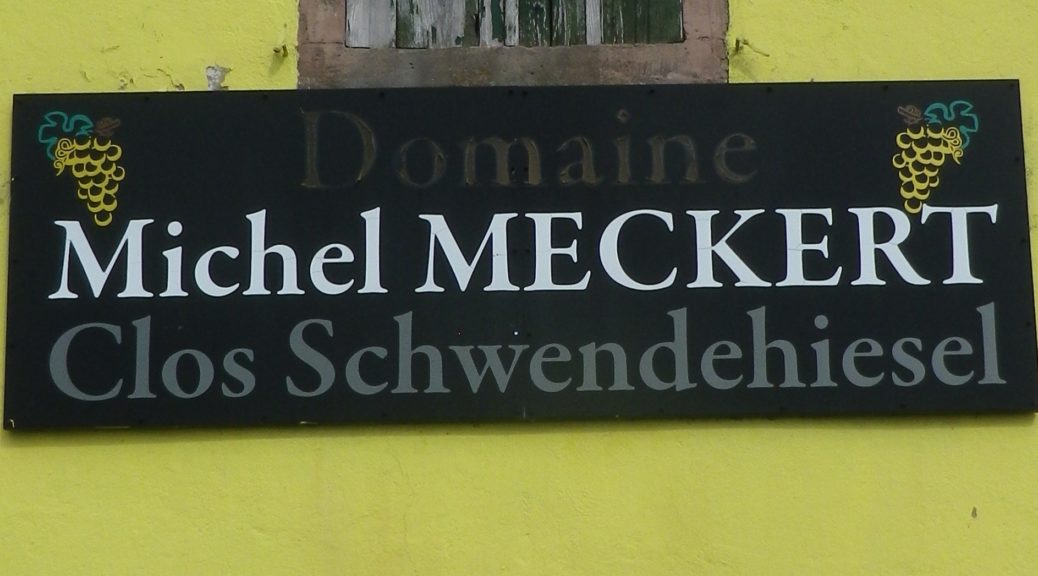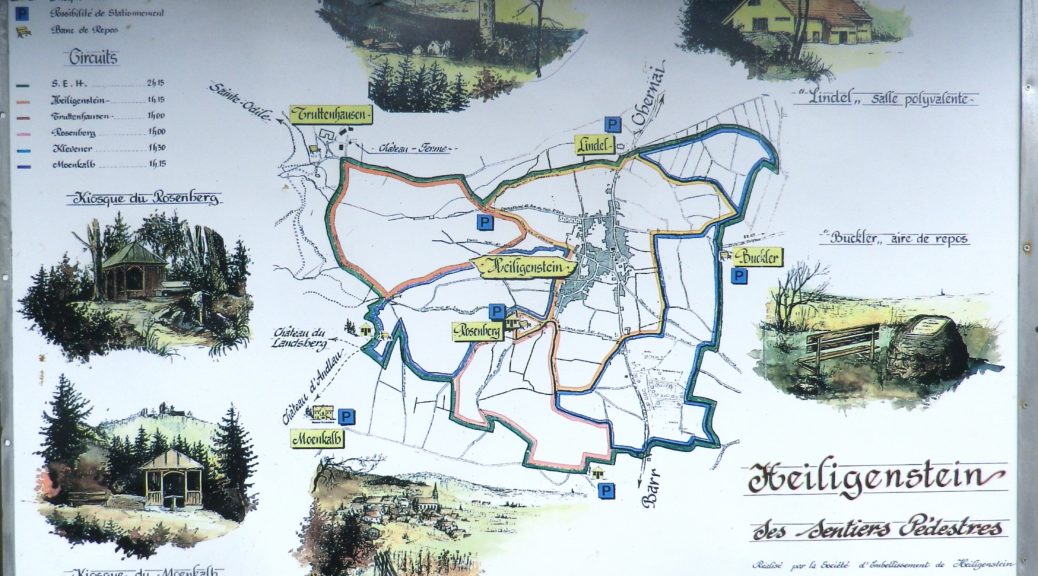Monthly Archives: February 2024
Uniquely Special in Alsace
There’s the Abbey of Truttenhausen, the Roseraie (Rose Garden), the Bear Fountain, and the famous (-for what, I don’t know-) Linden tree. All count among Heiligenstein’s attractions. I, however, was attracted to the grape vines. In Heiligenstein (and neighboring villages), the grape is the Savagnin rose, unique in Alsace. Heiligenstein’s vintners produce a special wine from this grape known as Klevener de Heiligenstein, a special aromatic wine reminiscent of Gewuerztraminer.
Fortunately, Heiligenstein has a number of hiking itineraries (and cycling itineraries) that pass through its vineyards. I selected one, a circuit, and computed the time I needed to finish before the wineries closed and the winter sun set behind the mountains. Mount Saint Odile lies to the west of the village. While only half the height of the tallest peak in the Vosges range, it rises sufficiently abruptly from the small town to form a protective barrier from the wind and cold.
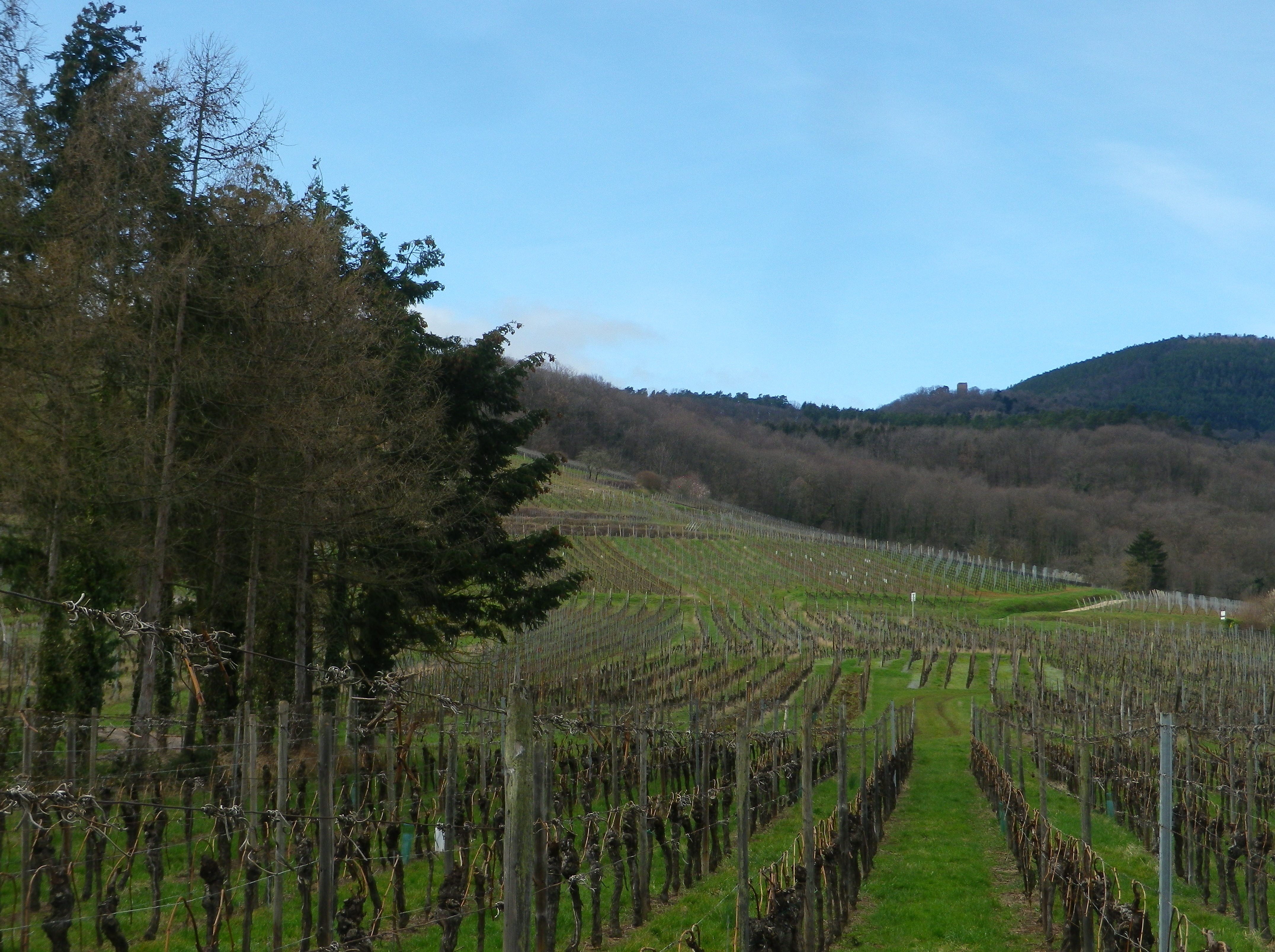
Thus, on a late February afternoon, the trail conditions were snow and ice free, even if it had been a bit rainy. No games or practices that day (maybe rain delays?), so the parking lot at the sports field was empty. Thus, it was a quiet start heading toward the mountain, but not a gloomy one. Rays of sun occasionally poked out from behind the clouds. Bright green was everywhere, even in winter, watered by the springs and rivulets that bubbled and burbled from the mountain side.
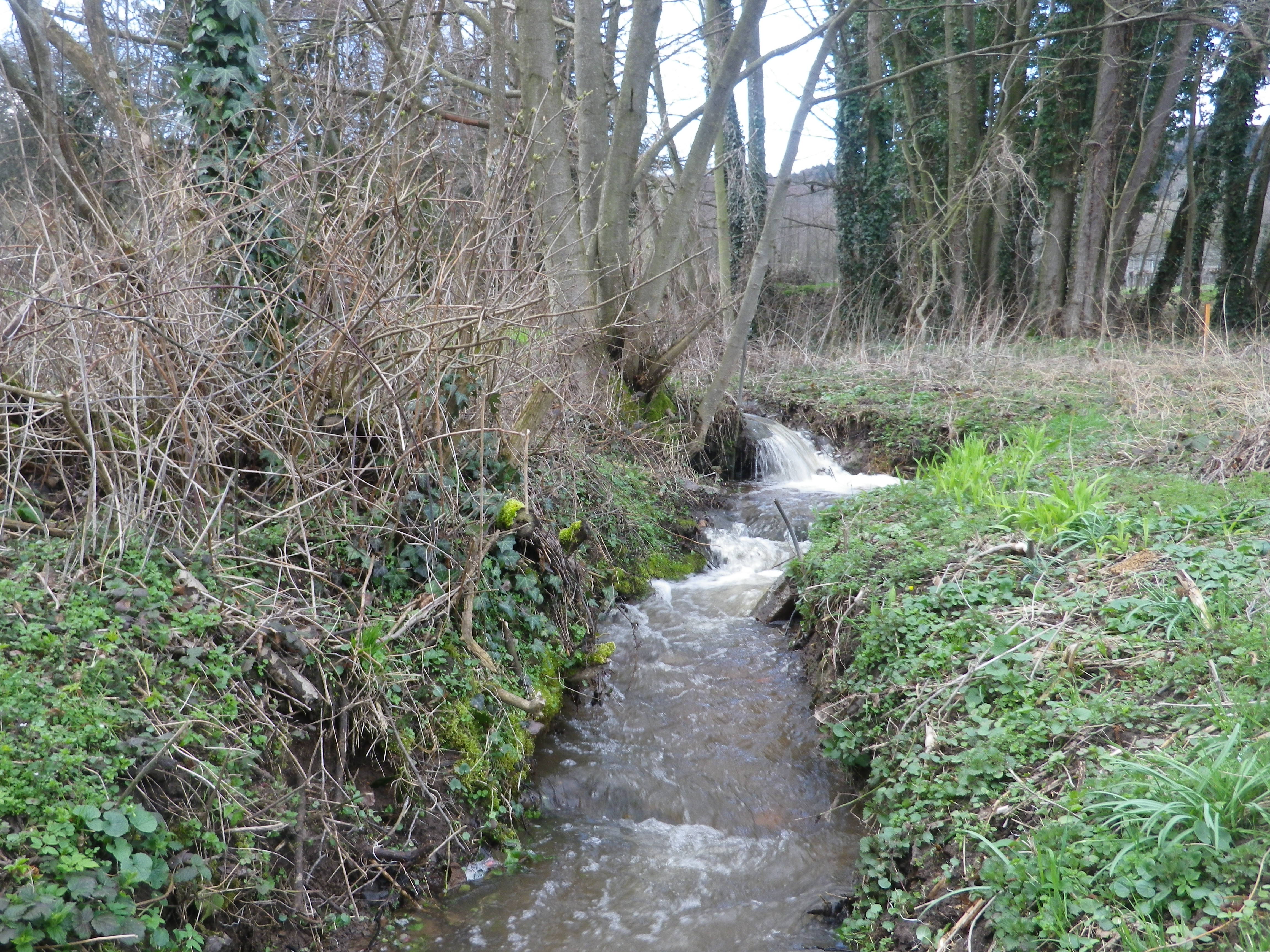
Approaching the area of Truttenhausen, signs to the Abbey appeared. Now in ruins, it is one of a couple of abbeys or chapels that developed on the slopes of Mount Saint Odile, a special place for a special saint from Alsace – one of their own who lived in this area about 1400 years ago. Her massive convent atop the mountain, with a statue of the saint high above it, casts a protective eye over much of northern Alsace. (Worth a visit for the 360 degree views.) While my trail was significantly lower down the slope, the views across the Rhine River valley over to Germany were still awesome nonetheless.
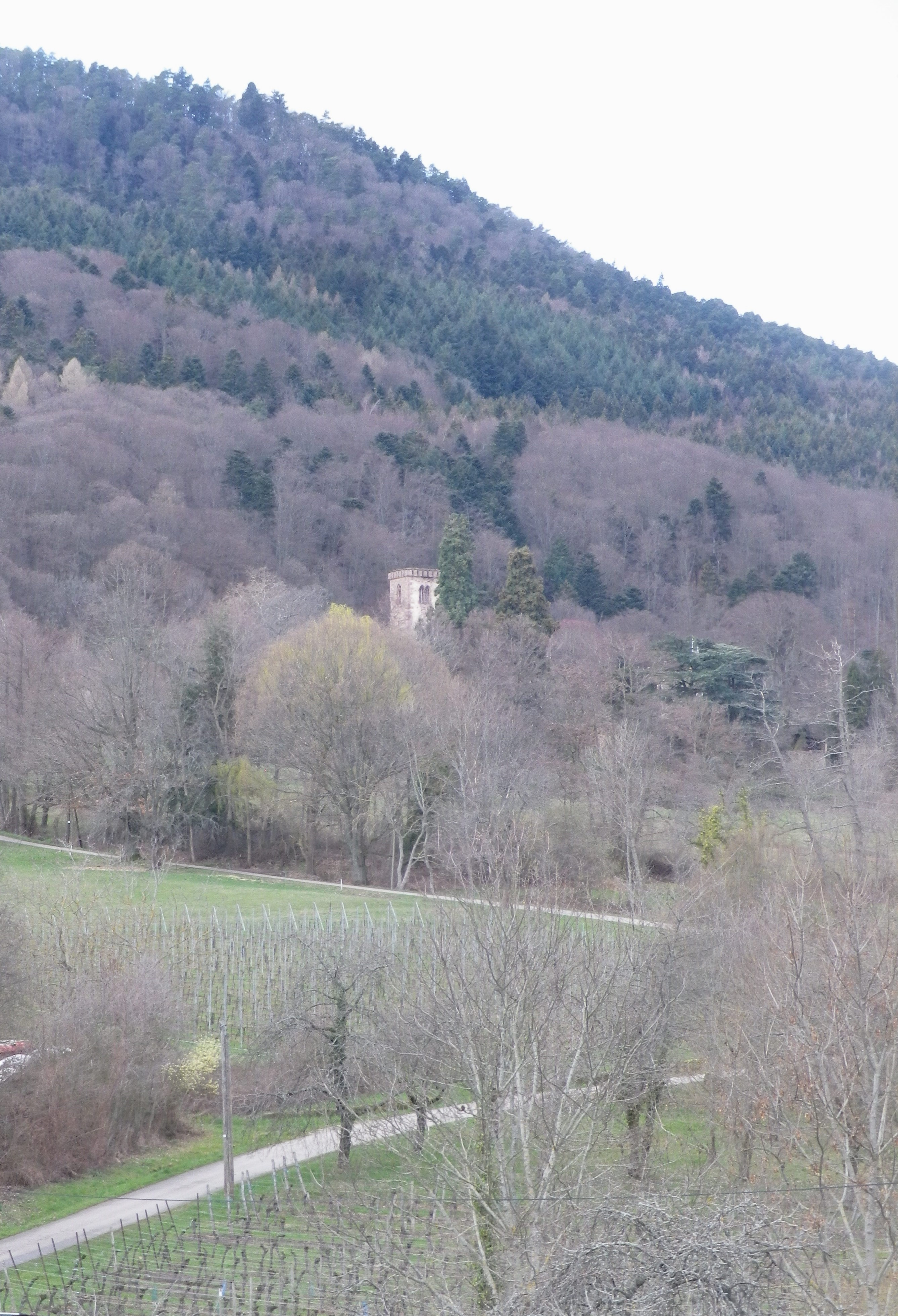
It wasn’t until after passing the famous landmark of the Linden of Heiligenstein, that the true extent of the town’s vineyards revealed itself. For beneath the tree-covered slopes of Mount Sainte Odile, vineyards extend downhill, toward the east and southeast for an impressive distance, until they adjoin the grain and vegetable fields of flatter lands to the east.
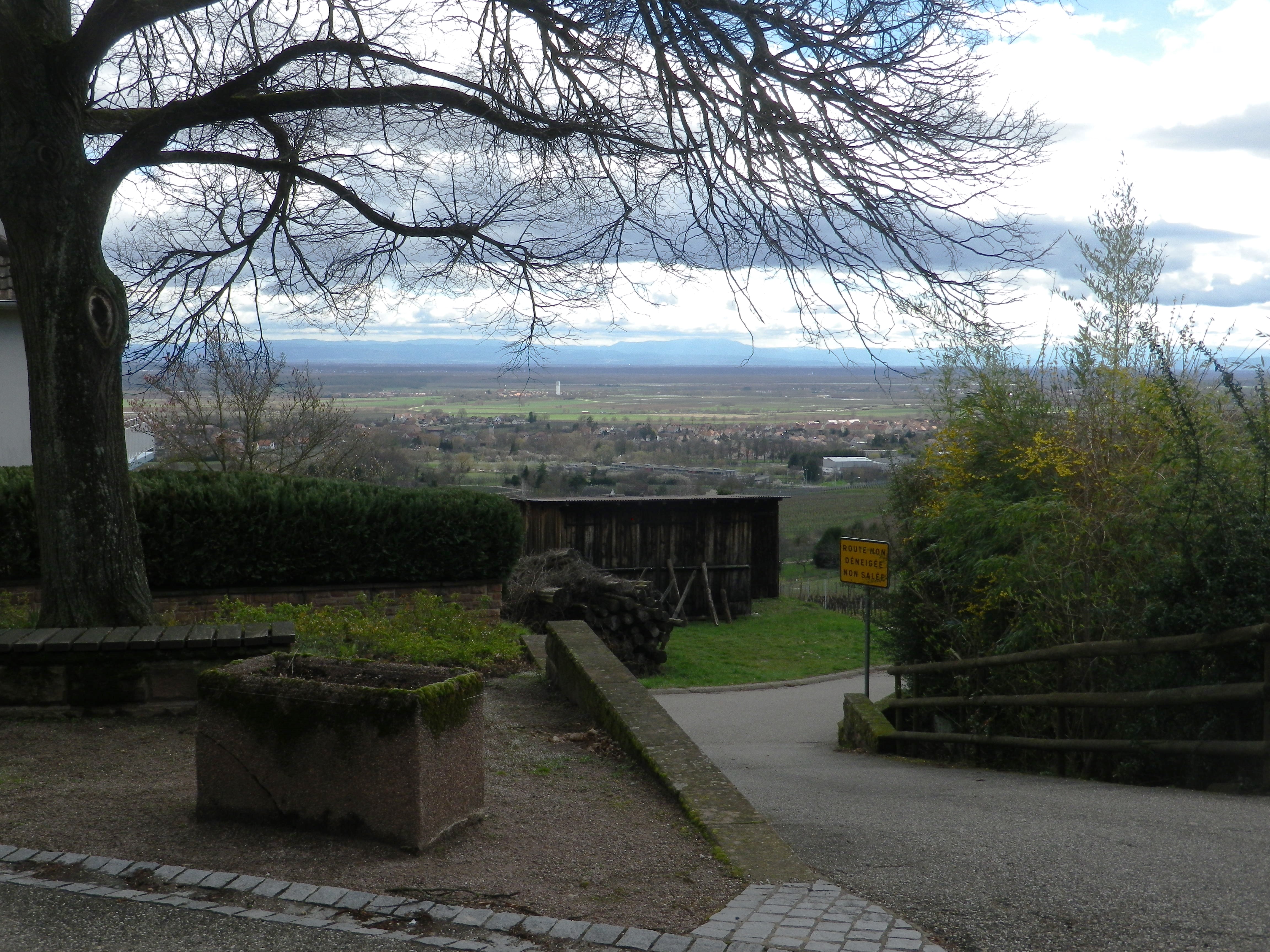
Following the circuit below the town placed me amidst acres of vines. Many plots have names, often they are (or were) enclosed. Many of the clos of Alsace are famous. One here was partially enclosed, but it never was famous, although it was obviously beloved by the local vintners at one point. Clos are special places where the grapes are particularly valued, hence protected by walls. Who knows – perhaps this is the plot where the grapes for the wine destined for the Bishop of Strasbourg, only 20 kilometers (about 12 miles) distant, grew. (Several towns, on both sides of the Rhine, owed an annual amount of wine to the Bishop of Strasbourg. Heiligenstein was just one of them.)
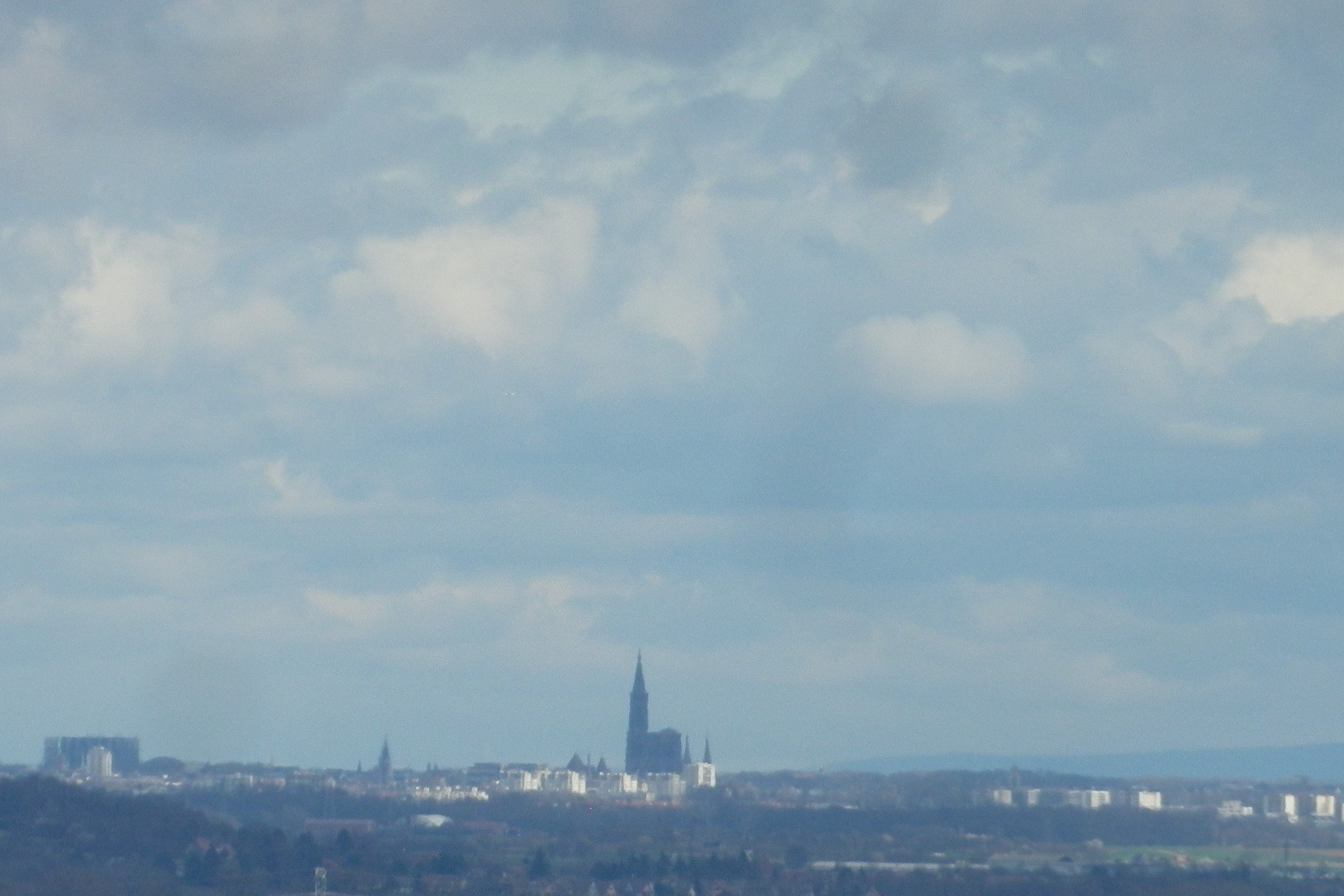
At the end of the circuit, I was less than half a kilometer from a few family-owned wineries. But it was necessary to jog to them to ensure I arrived before closing time. Unfortunately, there never seems to be enough time to enjoy wine! And unique wines like Klevener de Heiligenstein need both time and a special, objective perspective to savor them.
Wine Notes: Klevener de Heiligenstein
What I Learned
In 1742, Ehrhardt Wantz, mayor of the small village of Heiligenstein in Alsace, brought some Savagnin Rose vines from Italy. Descended from the Traminer grape (Gewuerztraminer), which also came originally from Italy, these grapes were planted in Heiligenstein and subsequently in some surrounding villages (Gertwiller, among them). Currently a dozen or so vintners work with this varietal. Supplanted then as now in many respects by the Gewuerztraminer, it has a subtler aroma and flavor profile, and is less well-known. It finally obtained Appellation Alsace Klevener d’Heiligenstein Controlee status in 1971. (Reference: Alsace Habsiger Domaine website: https://www.domaine-habsiger.fr/#klevener)
Heiligenstein does not have any Grands Crus, although it does have some well-sited vineyards, favored with good slope and sun and wind exposure, along with vintners passionate about creating their wines. Subtle, yet aromatic, the unique Klevener de Heiligenstein wine truly deserves its appellation status.
What I Tasted
2017 Klevener de Heiligenstein (Savagnin), Cuvee Numero 1, Appellation d’Alsace Controlee, Domaine Charles Boch (Heiligenstein): A dry white wine with medium yellow gold color; a floral and pear nose, with strong floral and mineral flavors, with a hint of green fruit, medium minus acidity.
2017 Klevener de Heiligenstein (Savagnin), Cuvee Tentation, Appellation d’Alsace Controlee, Domaine Charles Boch (Heiligenstein): A dry white wine with pale, white gold color; floral and spice nose, with honey, spice, toasted nuts and floral flavors; medium minus acidity.
2016 Klevener de Heiligenstein (Savagnin), Appellation d’Alsace Controlee, Kleinbuhr: A dry white wine with medium plus yellow gold color; a floral nose with hints of turpentine (as in reminiscent of Riesling); spice, floral (rose) and nutty flavors; medium plus acidity, with a smooth finish.
2016 Klevener d’Heiligenstein (Savagnin), Appellation d’Alsace Controlee, Maison Alsace Habsiger (Gertwiller): A dry white wine with medium gold color; slight floral nose, with honey, floral, mineral and very slight exotic fruits flavors; medium acidity.
Klevener de Heiligenstein: Trail in a Nutshell
Trail Name: Klevener de Heiligenstein
Trail Type: A short distance circuit; well-maintained and much of it paved or hard-pack, marking on the trail varies.
Length:
Total – 7.5 kilometers/ 4.7 miles
Convenient to: Barr, Alsace, France
Marking:
Varied, and none specific to the circuit
Trail Description: A delightful short trail, easily done, which covered vineyards and town, and gave distant views of the Black Forest in Germany and Alsatian landscapes near and far. As it was in a sheltered, and lower position, this itinerary presented no problems in the winter with snow or ice.
Trailhead:
Heiligenstein: Sports field, R. Principale/D35
Parking:
Heiligenstein on the north end of the main road, R. Principale/D35, on the north edge of town, by the Sports Field
Public Transportation Options:
Rail: SNCF Trains from Strasbourg service nearby Gertwiller. From that station, the southern-most point of the trail is about 1 kilometer distant. (The station in Barr is a bit further, but also larger.)
Suggested Stages:
Not applicable
Trail Itinerary-Reference Points: (Counterclockwise)
Heiligenstein: R. Principale/D35, R. (du) Kritt, R. des Chateaux; Truttenhausen: Kiosk and Hering Monument, Chemin du Moenkalb, past the Tilleul du Moenkalb (a famous linden tree); R. du Weinberg; vineyards, than an unimproved path downhill to cross R. Principale/D35; pass north of Domaine Bachert; through vineyards and fields, @100 yds on Saint Simonsbrunnen, go right onto small paved path, follow to T intersection, cross R Ehret Wantz; dogleg left, then first right to follow the winding road for about 400 meters/1250 feet, then rightat the Y intersection; take second left to return to sports field on D35 (see Lookout Point by the Sports Field),
Representative Trail Photos:
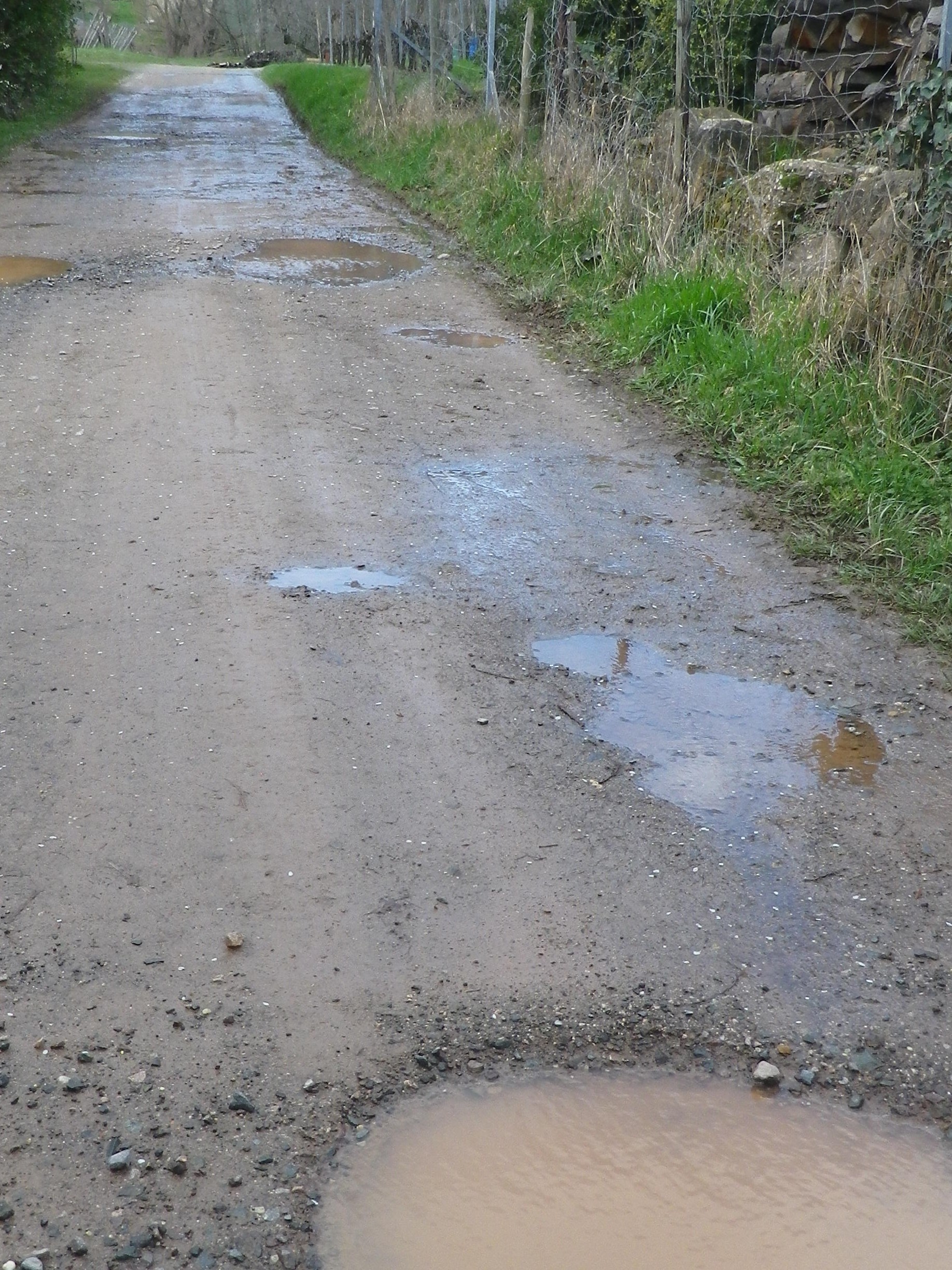
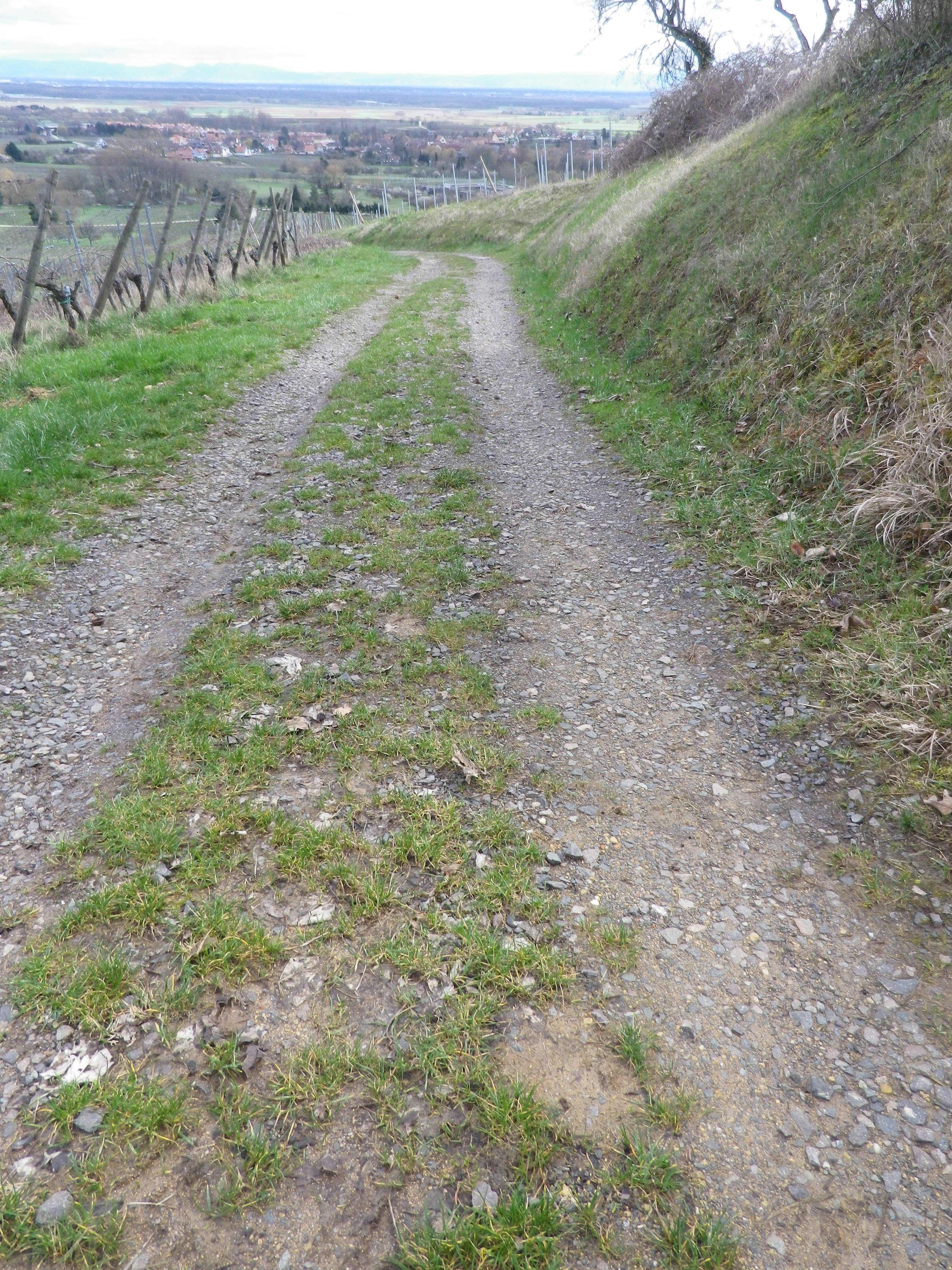
Restrooms:
Heiligenstein: R. Principale, behind the Mairie
Attractions on or near Trail:
None wine-related, other than the wineries!
Tasting along the Trail:
A few wineries on or near the trail that specialize in this varietal, and then other as well nearby.
Alternative Options:
Biking: Klevener et Pain d’Epice, a 32 kilometer/ 20 mile cycling circuit in this region. See https://www.alsaceavelo.fr/403000071-bl214-klevener-et-pain-depices/
Car: Heiligenstein is one of dozens of villages on the Route des Vins D’Alsace, almost 180 kilometers of car-touring route focused on Alsatian wines and through Alsatian vineyards.
Additional Information:
Regional: https://www.visit.alsace/
Trail specific:
https://apps.tourisme-alsace.info/photos/cdcbarr/photos/213000384_d1.pdf
Comments:
A peaceful village, in one of the least travelled sections of the Route des Vins d’Alsace, cultivating a varietal that is unique in France.
